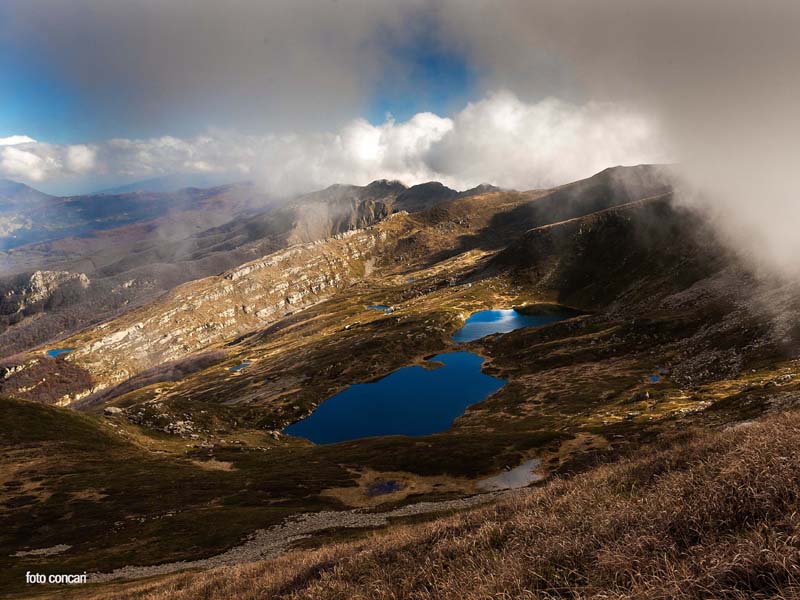What appears to be wild, has in fact been shaped over the centuries by the Park's communities
A Tale of Two Sides
TuscanY and EMILIA-ROMAGNA
Due to lower altitude and the Mediterranean climate, you will see an abundance of vineyards and olive trees on the Tuscan side of the Park. The Po Valley on the northern side of the Park has a cooler climate and you will encounter waving grass pastures for dairy cows whose milk is used to produce the region's famous Parmigiano-Reggiano cheese.
What you will see, from top to the bottom
On the ridgeline, between alps and the sea
The Apennine ridgeline is everywhere in the Park because its peaks always stick out on the horizon (south or north, depending which side you are on). Peaks have an average altitude of 1600 meters (5250 ft.) above sea level, with a few major peaks reaching 1900-2000 meters (6233-6561 ft). The highest peak in the region is Mount Cusna 2120 meters (6955 ft.), followed by Mount Prado 2054 meters (6738 ft.) and Alpe di Succiso 2017 meters (6617 ft.). At that altitude there are no longer trees - you only can see rocks and grasslands, where sheep have grazed for thousands of years, and striking views of the Apennines, the Apuan Alps and, in clear days, the alps on the north and the sea on the south. There are passes where the ridgeline slopes to around 1200 meters (3937 ft.), and these are the only places where you can actually reach the other side of the park.
glacial lakes of the parma district
Millions of years ago, there were several glaciers on this stretch of the Apennines and they left amazing glacial erosion cirques and precious glacial lakes, most of which are in the Parma district. Mount Sillara and other glacial lakes are at high altitudes surrounded by ridgeline grasslands, while stunning forests border lower altitude glacial lakes such as Lago Santo and Lago Verde.
The forests: beech and silver firs
Beech forests are very common in the park and can be easily identified by their vibrant colors - a rich green in the spring, orange in the fall, and a redish-purple at the end of winter. In addition to beech trees, you can also find sprawling forests of silver fir trees in the north of Italy in areas such as Abetina Reale and the Reserve of Guadine Pradaccio. Abetina Reale is well-known for its timber production and has been milling silver fir trees since 1400 for famous buildings around Italy, including the Florence Cathedral.
Chestnut groves: An Ancient food source
Chestnuts were the most important food source in the Park from Roman times to WWII. During this time, every village was surrounded by chestnut groves and were carefully taken care of by families generation after generation. In fact, some of the chestnut trees that you see today are 500 years old! Chestnut groves can still be found throughout the Park and some of the most beautiful groves are in Apella, Monchio delle Corti, Sillano and Busana.
parmesan cheese landscape
The pasture covered hilltops on the north side of the Park around Pietra di Bismantova are fertile grounds for the production of Parmesan Cheese. At the end of spring, hay is harvested and circular shaped hay bales can be seen on rolling hills as far as the eye can see.
mediterranean farmlands
In lower altitudes on the southern side of the Park you can see true Mediterranean landscapes such as Lunigiana's picturesque terraced vineyards and olive groves. At an even lower altitude, Garfagnana has spelt fields and market gardens that sprawl across the mountains sides and nearby villages. If you look closely, you can actually see ancient haystacks that were made into strong straw roofs in the village of Garfagnana.
















